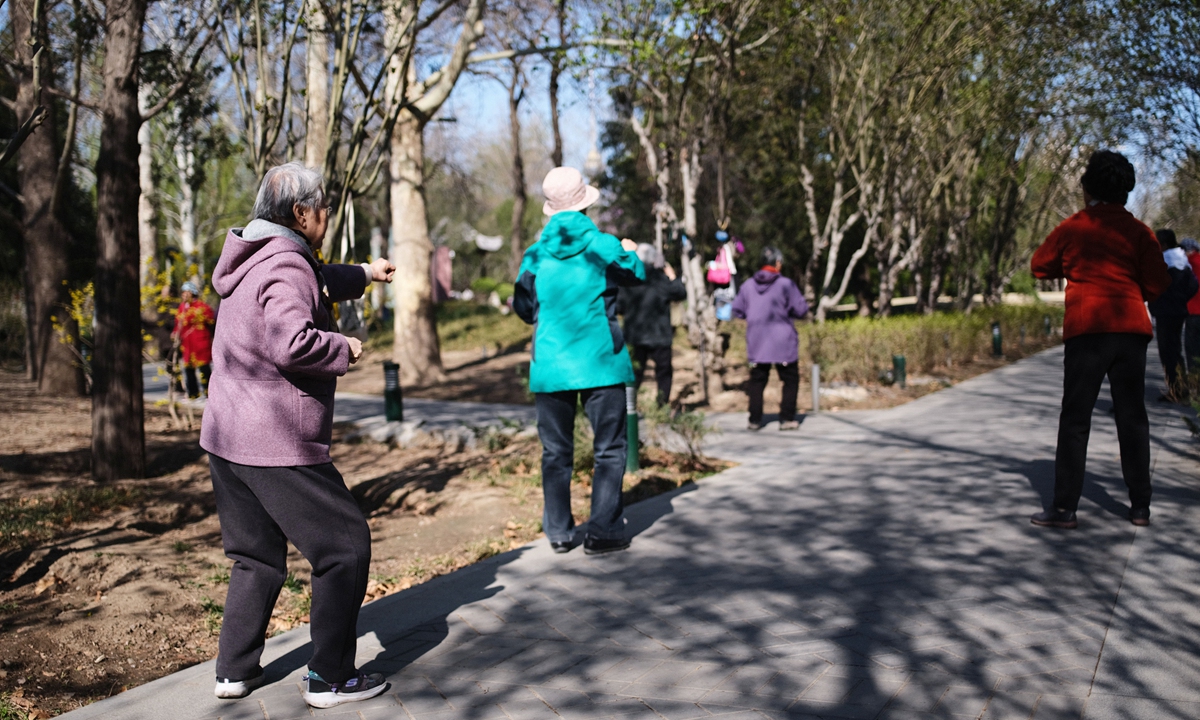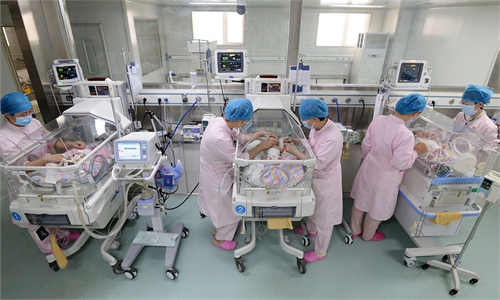China may see negative population growth in 2022, 12 years earlier than UN prediction: experts

Old people exercise at Yuyuantan Park in Beijing on April 18, 2021. Photo: IC photo.
Experts said that population aging may lead China to count more deaths than births in 2022, 12 years earlier than the UN predicted. They suggested boosting commercial insurance to support the elderly given the current inadequate old age welfare system.
Chinese people aged over 65 have surpassed 14% of the total population in 2021, which is an important indicator and means the country has formally become an aged society, said Zheng Bingwen, director of the Center for International Social Security Studies at the Chinese Academy of Social Sciences.
Zheng pointed out at Tsinghua PBCSF Global Finance Forum on Sunday that in 2000 China stepped into an aging society when its ratio of aged-population reached 7% and it only took the Chinese society 22 years to transfer from "aging" to "aged" status, a much shorter time period compared with some developed countries such as France, US and Japan who spent 115 years, 69 years and 26 years on the transition respectively.
As China is predicted to become super-aged in 2035 when more than 20% of its people will be above 65, Zheng warned the increasing burden for Chinese young people of supporting the elderly.
"China's dependency ratio was 17.9% in 2020, which meant that about six young people were needed to support one old man. But the ratio may surpass 43% in 2050, meaning every old man will have only 1.3 supporters," Zheng explained.
Given the current inadequate and unbalanced old age security system, experts suggested the public to pay more attention to the unique role of commercial insurance as it is developing very quickly.
Zhou Yanli, former vice chairman of China Banking and Insurance Regulatory Commission (CBIRC), said China has built an old age security system which mainly consists of three pillars: the basic pension covering workers and residents in towns and cities, the annuity covering employees of enterprises and government-related institutions, and the commercial endowment insurance.
"The system mostly relies on the basic pension which cannot cover rural population. The annuity of enterprises and government-related institutions also has very limited scale and the commercial endowment insurance as the third pillar has just begun to develop," Zhou pointed out.
Pan Yanhong, Chairman of China Pacific Life Insurance said the development of the third pillar has speeded up under a circumstance that China's financial gap in pension is predicted to reach from eight trillion to ten trillion yuan in the future five to ten years.
"The government has introduced the top-down design for the construction of the third pillar in 2021. China's insurance regulators have also promoted pilot projects on financial products of commercial endowment insurance, which are expected to enlarge the personal pension market space," said Pan.
"We need to mobilize multiple market players to participate in pension financial services and to provide the long-term pension insurance needed by the elderly, "Zhou added.



